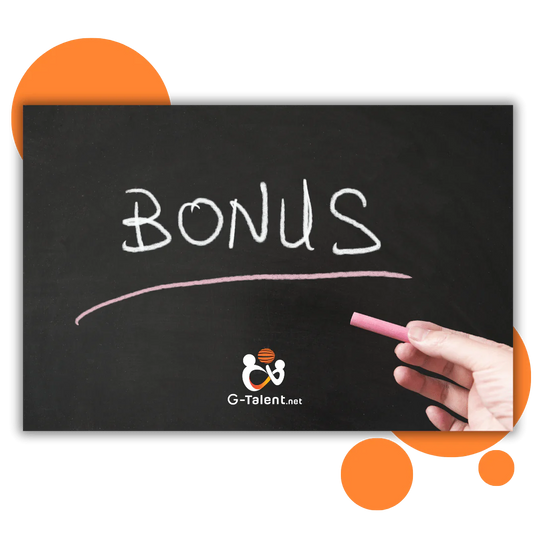Django 5 + Integration with Vue 3 and Bootstrap 5
By Andres Cruz Yoris | Bachelor of Computer Science - Central University of Venezuela
15 day refund guarantee
This course includes:
▪️ 38h 47m duration on demand
▪️ 360 lessons
▪️ downloadable resources
▪️ Available on mobile devices
▪️ Access forever
▪️ Language:
- Spanish
▪️ Unlimited consultations
⚑ Certificate of completion
What you will learn
What you will learn
🟧 You will gain a solid understanding of Django's core features, including its project structure, models, views, and templates, allowing you to create effective web applications.
🟧 You will be able to develop complete CRUD applications, integrating models, views, templates and using forms to handle requests and validations.
🟧 You will learn how to manage and customize the Django admin panel, including creating superusers, customizing forms, and implementing custom validations.
🟧 You will develop skills to create RESTful APIs with Django Rest Framework, from data serialization to authentication and pagination configuration.
🟧 You will learn how to create interactive and responsive front-end applications using Vue 3 and Bootstrap 5, and how to consume REST APIs from these applications.
🟧 You will understand how to implement asynchronous channels in Django to handle real-time communications, using technologies such as WebSockets and Redis.
🟧 You will be able to implement custom authentication systems, managing user access and protecting web applications.
🟧 You will develop skills in writing and executing unit and integration tests in Django, ensuring the quality and reliability of your applications.
🟧 You will learn how to manipulate files in Django, including reading and writing CSVs and generating PDFs from HTML templates.
🟧 You will gain knowledge on how to continuously optimize and improve your applications using signals and other advanced Django tools.
Course content
Course content
U1: Introduction to Django
- Introduction
- Required Software
- Check the access command for Python 3 and Pip
- Prepare the environment
- Install Django
- Project vs Application
- Project structure
- Hello World
- Command line in Django
- MTV
- Optional: Select the Python interpreter in VSC and/or create venv
U2: Getting started with Python (Reinforcement)
- Introduction
- Interactive console/Python console
- Python Files
- Variables and data types
- Mathematical operations
- String Concatenation
- Castings
- Lists
- Conditionals
- Cycles
- Functions
- Functions part 2
- Dictionaries
- Classes, First steps
- Classes, First classes
- Classes, Constructor Method
- Classes, Inheritance
U3: Create a CRUD type application
- Introduction
- Models
- Challenge: Create a comment template
- Introduction to migrations
- View database
- Reversing migrations
- Render a template
- Passing parameters to the template
- Container folders for templates
- Shortcut, help functions
- Forms and handling requests from the view/controller
- Create a model object and register it in the database
- Templates for forms
- Database operations
- Shell
- CRUD: List
- CRUD: Edit
- CRUD: Delete
- Redirects
- Pagination
- Find or 404: Detail
- Find or 404: Listings
- Faker: First tests
- Faker: Create script
- Publish on Github
U4: Django Admin
- Introduction
- Presentation
- Create super user
- Adding our own relationships
- Customize query options
- Customize save options
- Registering classes using a decorator
- Register the model for types and categories
- Register the model for the elements
- Group management fields, fields
- Group management fields, fieldset
- Customize form fields
- Create customizable fields
- Save Options
- Online models
- Customize CRUD management methods
- Custom validations
- Create element slug automatically in → Django admin
- Theme and static CSS, JS files...
- Publish on Github
U5: Forms
- Introduction
- Presentation
- Form for the elements
- View to process the form
- Challenge: Create a ModelForm for the elements
- List
- Validations: Introduction
- Show validation errors
- Extra: Route correction
- Custom validations
- Reference form fields and labels individually
- Form Assets (Media class): Introduction
- Form Assets (Media class): Widget attribute
- Form Assets (Media class): Widget class
- Form Assets (Media class): Widget class part 2
- Form Assets (Media class): Field types
- Form Assets (Media class): Modify attributes
- Form Assets (Media class): Django widgets
- field group
- Publish on github
U6: Templates: Master templates, labels and filters
- Introduction
- Presentation
- Master template
- Reusing templates from other applications
- Include templates or fragments
- Template fragments and parameters
- Other uses of blocks in templates
- Logical tags: if and for, presentation
- Programming our own labels
- Filters: Presentation
- Filters: cut
- Filters: date
- Filters: now
- Filters: lower
- Filters: upper
- Filters: add
- Filters: with
- Filters: cycle
- Filters: default
- Filters: length
- Filters: safe
- Filters: join
- Nested Filters
- Programming our own filters
- Switching template engine - Jinja2
- Publish on Github
U7: Working with QuerySets
- Introduction
- Create an object
- Get an object
- Update an object
- Recovering objects
- Filter objects
- Exclude results
- Order
- Deleting objects
U8: Create a Rest API with Django Rest Framework
- Introduction
- Presentation
- Install package and configure
- Define serialization
- Define viewset (view)
- Routes
- Testing with the Rest Api
- Problems when creating/updating an item
- Customizing ViewSets classes
- Enable pagination
- many=true, inverse relationship
- Custom methods for serializations
- Custom methods for viewsets
- Hooks methods in viewsets
- Authentication: Presentation
- Authentication: Session and Basic
- Authentication: Token: Base Configuration
- Authentication: Token: Login function
- Authentication: Token: Login function
- Setting up CORS
- Publish on github
U9: Application with Vue 3, NaiveUI, consume Rest API
- Introduction
- Vue CLI
- Create the project
- Install and configure Vue Router
- Install axios and first request
- Create a repository in git
- Create a category listing
- Task: Create a list of types
- Navigation between pages
- About, Install, Configure and First Test with Naive UI
- Table component for categories and types
- Space: Container
- Layout: Basic skeleton
- Menu: with menu component
- Menu: Set up RouterLink
- Adapt menu in a separate component
- Menu: Dynamic Listing Options
- Header for categories and types
- Buttons for RouterLink
- Integrate Tailwinds.css
- Adapt visual details
- List of items
- Extra: Group routes
- List of items by category
- Task: Listing elements by type
- Extra: Introduction to overriding the NaiveUI theme
- Detail view of the elements
- Publish to git
U10: Application in Vue 3: CRUD and forms
- Introduction
- Form for categories, initial structure
- Form for categories, create
- Form for categories, error handling
- Form for categories, edit
- Task: Form for types
- Form for elements, initial scheme
- Form for elements, create lists
- Integrate CKEditor
- Enabling CKEditor CSS
- Publish to git
U11: View 3: Adjustment
- Enable category and type menu options
- Arrange date elements
- Redirect in Vue Router
- Visual changes
- Multiple router-views: Title at the base
U12: Class-Based Views (CBV): Book Web
- Introduction
- Create project and application
- Create initial model
- Create initial form
- Create the first CBV to manage the form and success
- UpdateView: Update
- CreateView: Create
- DeleteView: Delete
- DetailView: Detail
- IndexView: List
- Publish to git
U13: Class-Based Views (CBV): Authentication
- Introduction
- LoginView: View for login
- LogoutView: View for logout
- PasswordChangeView: View to change password
- PasswordChangeRest: View to change reset password
- Publish on github
U14: Managing files
- Introduction
- Presentation
- Create a project and application
- CSV: Getting started
- CSV: Read
- CSV: Read, Dictionary
- CSV: Write a file
- CSV: Write a file
- Close file and reserved word with
- XLSX: Create Application
- XLSX: Read
- XLSX: Write
- Generate PDFs: Create application
- Generate PDFs: Generate a PDF from an HTML page
- Generate PDFs: Weasyprint other options
- Generate PDFs: Generate a PDF from a Canvas
- Circles, rectangles and lines, colors...
- Download any existing file
- Download PDF, reporlab
- Publish on github
U15: Django Channels: Single Channel
- Introduction
- Django Channels, Presentation
- Create project and install dependencies
- Setting up project and server with channels[daphne]
- Create sample models and sample data
- Consumer: First steps and creation
- Client (View and Template): Base structure
- Client (View and Template): WebSocket, Open Channel
- Client (View and Template): WebSocket, Terminal implementation
- Install Bootstrap 5
- Setting up application with B5
- Publish on github
U16: Django Channels: Multiple Channels
- Introduction
- Presentation
- Redis: MacOS
- Redis Channels: Install
- Redis Channels: Configure
- Changes to the chat application: Part 1
- Changes in the chat application: Sending messages
- Changes in the client
- Converting the consumer to asynchronous code
- Publish on Github
U17: DRF, Django Channels and Vue: Alert Messages Application
- Introduction
- Presentation
- Necessary installations and configurations
- Alert template
- Alert serialization
- Authentication using tokens
- Check previous methods
- Consumer
- Create project in Vue
- Install and configure dependencies in Vue
- Vue Component: Login
- Vue Component: Logout
- Component for sending and receiving messages
- Middleware for token authentication at the consumer level: Theory
- Middleware for token authentication at the consumer: Base structure
- Middleware for token authentication at the consumer level
- Display alert messages per user
- Applied design
- Room selection
- Final touches
- Publish on github
- Extra: Block textarea when connecting to websocket and show loading message
- Extra: Destroy authentication token on the server
U18: Tests
- Introduction
- Presentation
- Mathematical tests
- Prepare environments
- What are we going to try?
- Test Client in Django, first steps
- Test Client in Django using classes
- TestCase: setup
- Tools for performing tests
- Context of unit testing
- Comments Crud: Index
- Review
- Comment Crud: Create - Get
- Comment Crud: Create - Post
- Challenge: Comment Crud: Update
- Challenge: Comment Crud: Delete
- Other assertion methods: assertRedirects
- Other assertion methods: assertTemplateUsed
- Other assertion methods: assertHTMLEqual
- Forms: Fields
- Forms: Valid
- Forms: Invalid
- Forms: Create
- Forms: Update
- Improve the file and folder structures of tests
- Run certain tests
- Api: Paginated
- API: Detail
- Api: Detail with Serialization
- Api: Create
- API: Update
- Api: Delete
- Try CommentSerializer
- API: Form with validation errors
- Api: Prepare class
- Api: Paginated
- Api: Format JSON
- Api: Create Element
- Api: Update Element
- API: Form with validation errors
- Api: Delete Item
- Try ElementSerializer
- Authentication
- Factory
- Publish on github
U19: Custom Authentication
- Introduction
- Create project and application
- Expose authentication routes
- Override login template
- Run migrations and create superuser
- next parameter
- Enable static files
- Install Bootstrap and Fontawesome
- Create a master template
- Specifying HTML attributes with django-widget-tweaks
- login.html
- Alert message
- password_change_form.html
- password_change_done.html
- password_reset_form.html
- password_reset_done.html
- Extra: Sending emails, configuring Mailtrap
- password_reset_confirm.html
- password_reset_complete.html
- Register: Initial structure of the view
- Register: Form
- Register: Initial structure of the view
- Demo: Register: Custom Form
- Profile: Base structure
- Upload avatar: Model
- Upload avatar: Define form
- Upload avatar: Use form
- Upload avatar: Search existing userprofile
- Upload avatar: Set MEDIA_ROOT
- Upload avatar: Remove previous avatar image
- Upload avatar: File validations (avatar)
- Other fields: Model, Form and Migration
- Other fields: Template
- Show profile information: Authenticated user
- Show profile information: Avatar
- Publish on github
U20: Signals
- Introduction
- Presentation
- Implement a signal
- Publish on github
Course evaluation
- This course contains a final exam
G-Tools: For Students
- Exclusive access to cutting-edge student tools: improve your employability, participate in exclusive events, take advantage of our intelligent virtual assistant, and more.
⚑ Certificate of completion
- Your personalized digital certificate, a unique badge of your achievements, with international validity, course duration and QR code for instant verification.
__
Downloadable resources:
Description
Description
✔️ We are going to learn how the framework is formed, the basic characteristics that Django allows us as a framework par excellence to create CRUDs processes, which range from the creation of views, templates, connection with models, routing, form validations, creating middleware among others.
In short, you will have a huge amount of material at your disposal to create real web applications.
This is not a course that aims to know Django 100%, or from zero to expert, since that would be too big an objective for the scope of this guide, but rather to know its ecosystem, what it offers us and how it works based on several examples and/or small applications with limited scope.
Companies from all industries invest in the development of their teams with this course from G-Talent and Andres Cruz Yoris
La estructura del curso es muy bien organizada. Cada módulo se construye sobre el anterior, facilitando el aprendizaje.
Este curso me ha abierto las puertas a un mundo de posibilidades en el desarrollo web
La integración de Vue 3 con Django es genial.

Andres Cruz Yoris
Bachelor of Computer Science - Central University of Venezuela
About Andres Cruz Yoris
About Andres Cruz Yoris
Bachelor of Computer Science - Central University of Venezuela
Software developer with over 10 years of experience. Passionate about programming and continuous learning, Andrés has dedicated his career to creating services and applications that make users' lives easier, always exploring and adopting the latest Internet-related technologies.
Andrés Cruz Yoris combines his solid background in computing with a deep curiosity for new technologies. For more than a decade, he has worked on various software development projects, where his self-taught approach has allowed him to master multiple programming languages and tools. His ability to learn independently and apply this knowledge in real projects makes him a versatile and effective developer.
Now, Andrés is dedicated to sharing his vast experience with others, offering his knowledge in an accessible and practical way. Through his courses, he seeks to help others learn quickly and comfortably, providing an education that combines theory with examples and practical applications.
What makes Andrés different?
▪️ Experience in Software Development: With more than 10 years in the industry, Andrés has acquired extensive experience in creating applications and services that improve the lives of users.
▪️ Passion for Technology and Learning: Andrés is an enthusiast of new technologies and is self-taught, which allows him to always be at the forefront in his field.
▪️ Practical and Accessible Teaching: Its educational approach is designed so that students can learn quickly and effectively, with an emphasis on the practical application of knowledge.
If you are looking to learn from a computer expert with a passion for technology and teaching, Andrés Cruz Yoris is the ideal choice.

Discover the added value: G-Tools and much more
In addition to high-quality content, this course gives you access to G-Tools, a suite of tools and resources designed to enhance your learning and your career.
Employability support resources, live events and take advantage of Aixa.IA's artificial intelligence to resolve your questions at any time.
Explore other courses from Andres Cruz Yoris
Discover other courses and learn something new today. Learn from the best!
-
Laravel 11 from scratch + integration with Tailwind.css and Vue 3
★★★★★(10)$15.99 USD$74.99 USDUnit price /Unavailable -
Django 5 + Integration with Vue 3 and Bootstrap 5
★★★★★(9)$13.99 USD$74.99 USDUnit price /Unavailable
Best Selling Courses in Personal Development
-
-
Handling Difficult People at Work: Effective Strategies to Improve Your Work Environment
★★★★★(15)$15.99 USD$59.99 USDUnit price /Unavailable -
-
-
-
Introduction to leadership and team management
★★★★★(10)$13.99 USD$59.99 USDUnit price /Unavailable -
-
-
Building habits based on Behavioral Science.
★★★★★(14)$13.99 USD$59.99 USDUnit price /Unavailable -
-
Mindfulness and Wellbeing: Revolutionize your Business
★★★★★(224)$13.99 USD$59.99 USDUnit price /Unavailable -
-
Effective Communication: Learning to Improve Verbal Communication
★★★★★(86)$13.99 USD$59.99 USDUnit price /Unavailable -
Project Planning and Management with Asana
★★★★★(10)$13.99 USD$59.99 USDUnit price /Unavailable -
Project Planning and Management with Microsoft Planner
★★★★★(10)$13.99 USD$59.99 USDUnit price /Unavailable -
-
Communication and Leadership in the Digital Age
★★★★★(171)$13.99 USD$59.99 USDUnit price /Unavailable -
Tactics for dealing with difficult people at work
★★★★★(53)$13.99 USD$80.00 USDUnit price /Unavailable
What to expect from G-Talent courses?
-
Study at your own pace
Get video courses, taught by top instructors, to study at your own pace
-
Learn from the best
Provides high quality courses developed by carefully selected experts
-
Quality guaranteed
Not sure? All our courses offer a 15-day success guarantee
-
Permanent accompaniment
Learn at your own pace, with lifelong updates, access and support.
-
Personalized certificate
Get a world-class certificate, with international validity and a unique encrypted QR code
-
G-Tools: For Students
Find all the tools you need for your employability in one place.
























